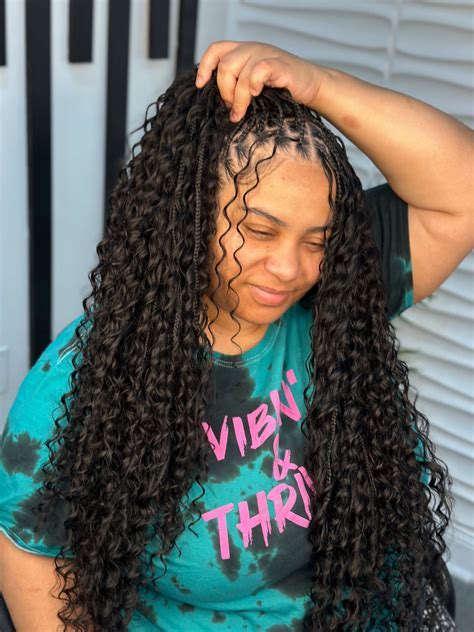Introduction
Tree braiding, an ancient art form, transforms human hair into intricate patterns inspired by the branches of trees. With over 10,000 known techniques, this mesmerizing craft empowers individuals to adorn themselves with unique and captivating styles. The versatility of hair tree braiding makes it suitable for diverse occasions, ranging from cultural ceremonies to everyday wear.

Hair for Tree Braiding: A Journey Through History
Tree braiding traces its origins to ancient African civilizations, where it played a significant role in adornment and cultural identity. The art form spread to other parts of the world, including Southeast Asia and Central America, where it adapted to local traditions and aesthetics.
Techniques and Styles of Tree Braiding
The vast array of tree braiding techniques can be categorized into three main types:
1. Interlocking Tree Braiding
Interlocking tree braiding involves intertwining two or more strands of hair without the use of any external materials. This technique results in strong, long-lasting braids that can be worn for extended periods.
2. Dreadlock Tree Braiding
Dreadlock tree braiding incorporates dreadlocks into the design. Dreadlocks are formed by tightly twisting sections of hair together. The combination of dreadlocks and tree braiding creates striking and visually captivating styles.
3. Micro Tree Braiding
Micro tree braiding uses extremely thin strands of hair, allowing for intricate and detailed designs. This technique is ideal for creating delicate and feminine styles that accentuate facial features.
Health Benefits of Tree Braiding
Beyond its aesthetic appeal, tree braiding offers several health benefits:
- Reduced Hair Loss: Braiding hair together helps protect it from breakage and tangles, reducing hair loss over time.
- Improved Hair Growth: The gentle tension created by tree braiding stimulates blood flow to the scalp, promoting hair growth and reducing shedding.
- Scalp Health: Tree braiding provides a protective barrier against scalp irritation and dandruff, keeping the scalp clean and healthy.
Choosing the Right Tree Braiding Style
Selecting the perfect tree braiding style depends on several factors, including:
- Hair Type: Different hair types respond differently to tree braiding. Thicker, coarser hair can handle more intricate techniques, while finer hair may require gentler approaches.
- Occasion: Consider the occasion for which you are braiding your hair. Formal events may call for more elaborate styles, while casual wear allows for simpler designs.
- Personal Style: Ultimately, the best tree braiding style is the one that complements your personal aesthetic and makes you feel confident.
Tips for Tree Braiding Success
- Use Quality Hair Products: Invest in high-quality hair care products to protect your hair from damage during and after braiding.
- Moisturize Regularly: Keeping your hair hydrated prevents dryness and breakage.
- Avoid Heat Styling: Excessive heat styling can damage hair, especially when it is braided.
- Take Breaks: Avoid wearing tree braids for excessively long periods to give your scalp and hair a chance to rest.
- Seek Professional Help: For more complex or intricate techniques, consider seeking the guidance of a professional hair stylist.
Step-by-Step Tree Braiding Techniques
1. Basic Three-Branch Braid
- Divide hair into three equal sections.
- Cross the left section over the middle section.
- Cross the right section over the new middle section.
- Repeat steps 2-3 until the braid reaches the desired length.
2. French Braid
- Start with a small section of hair at the crown.
- Divide into three strands and cross the left over the middle, then the right over the new middle.
- Add a small section of hair from one side and cross it over the outside strand.
- Repeat steps 3-4 on the other side.
- Continue braiding until the desired length is achieved.
3. Waterfall Braid
- Part the hair on one side.
- Take a small section of hair from the top and divide into three strands.
- Cross the left strand over the middle.
- Cross the right strand under the middle and over the left.
- Release the left strand and pick up a new section of hair from the side, forming a new left strand.
- Repeat steps 4-5 until the braid reaches the other side of the head.
4. Fishtail Braid
- Divide hair into two equal sections.
- Take a small section from the outside of the left section and cross it over to the inside of the right.
- Repeat step 2 on the right side, crossing a small section from the outside to the inside of the left.
- Continue alternating sides until the braid reaches the desired length.
Conclusion
Tree braiding, an art form steeped in history and culture, offers a myriad of techniques and styles to enhance your appearance and promote hair health. By following these tips and techniques, you can create stunning and captivating braids that will turn heads wherever you go. Embrace the versatility and beauty of tree braiding, and let your hair become a masterpiece of nature’s design.
